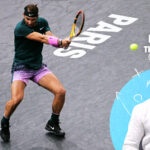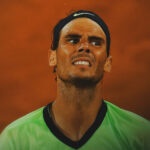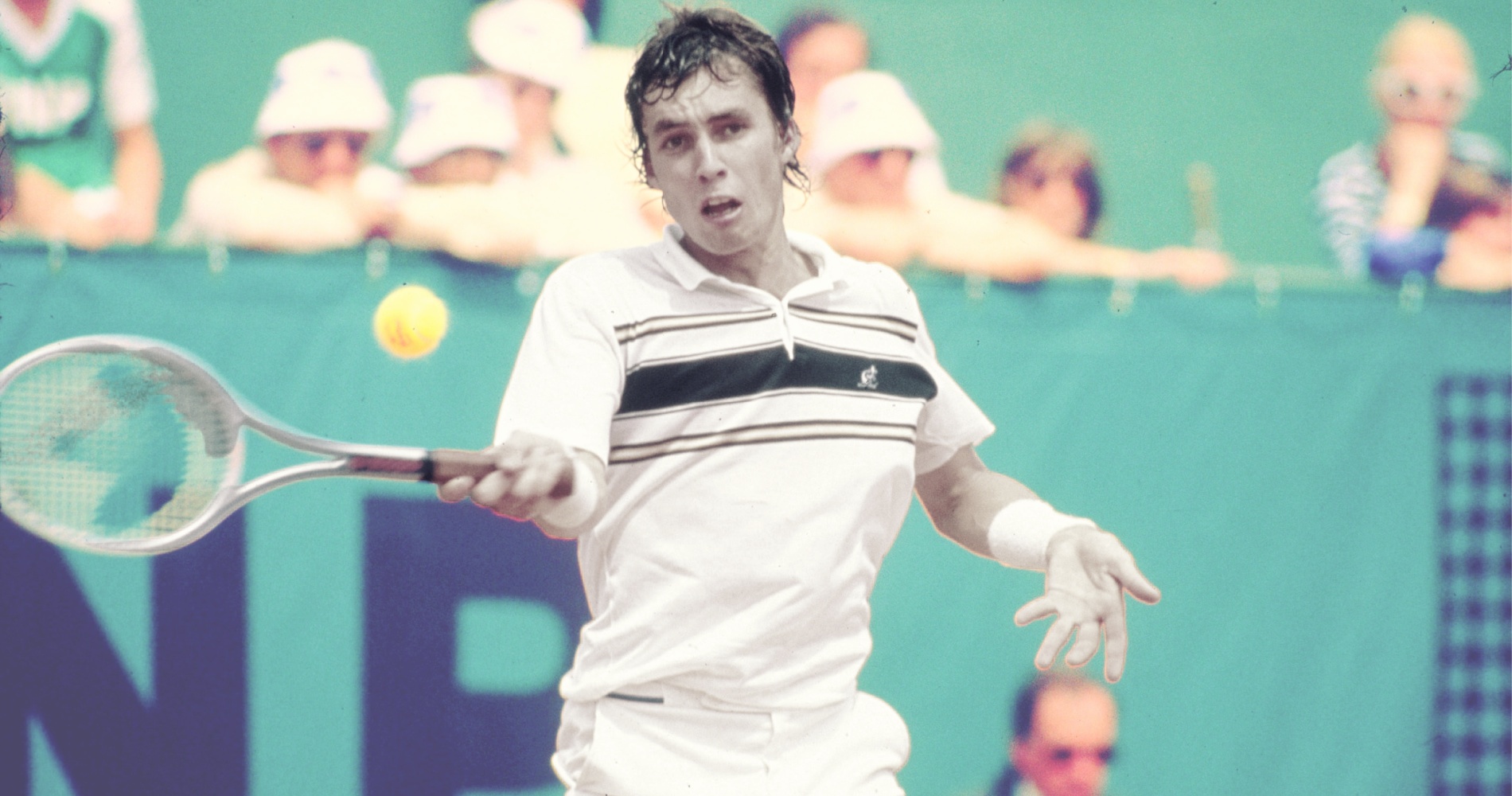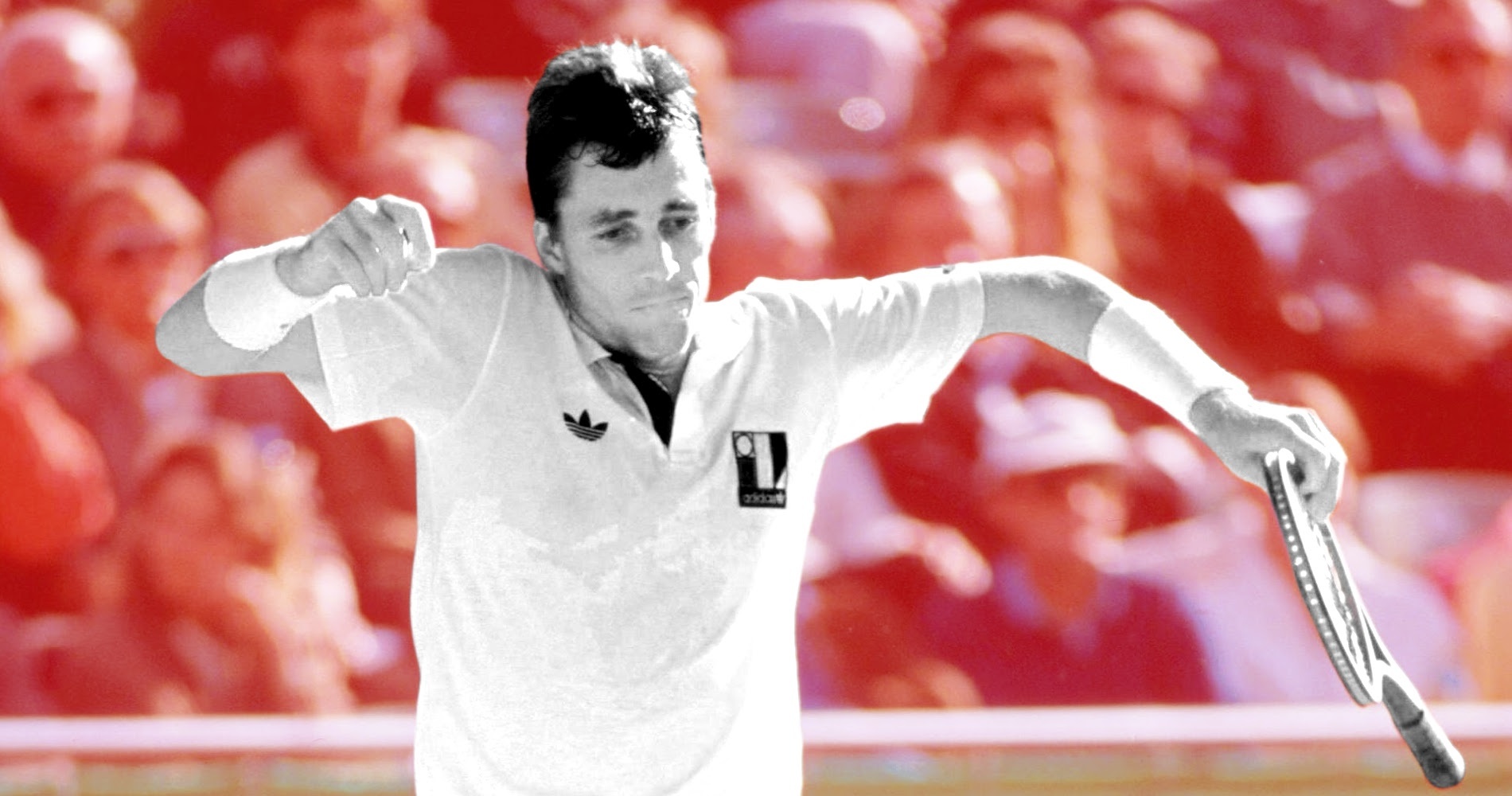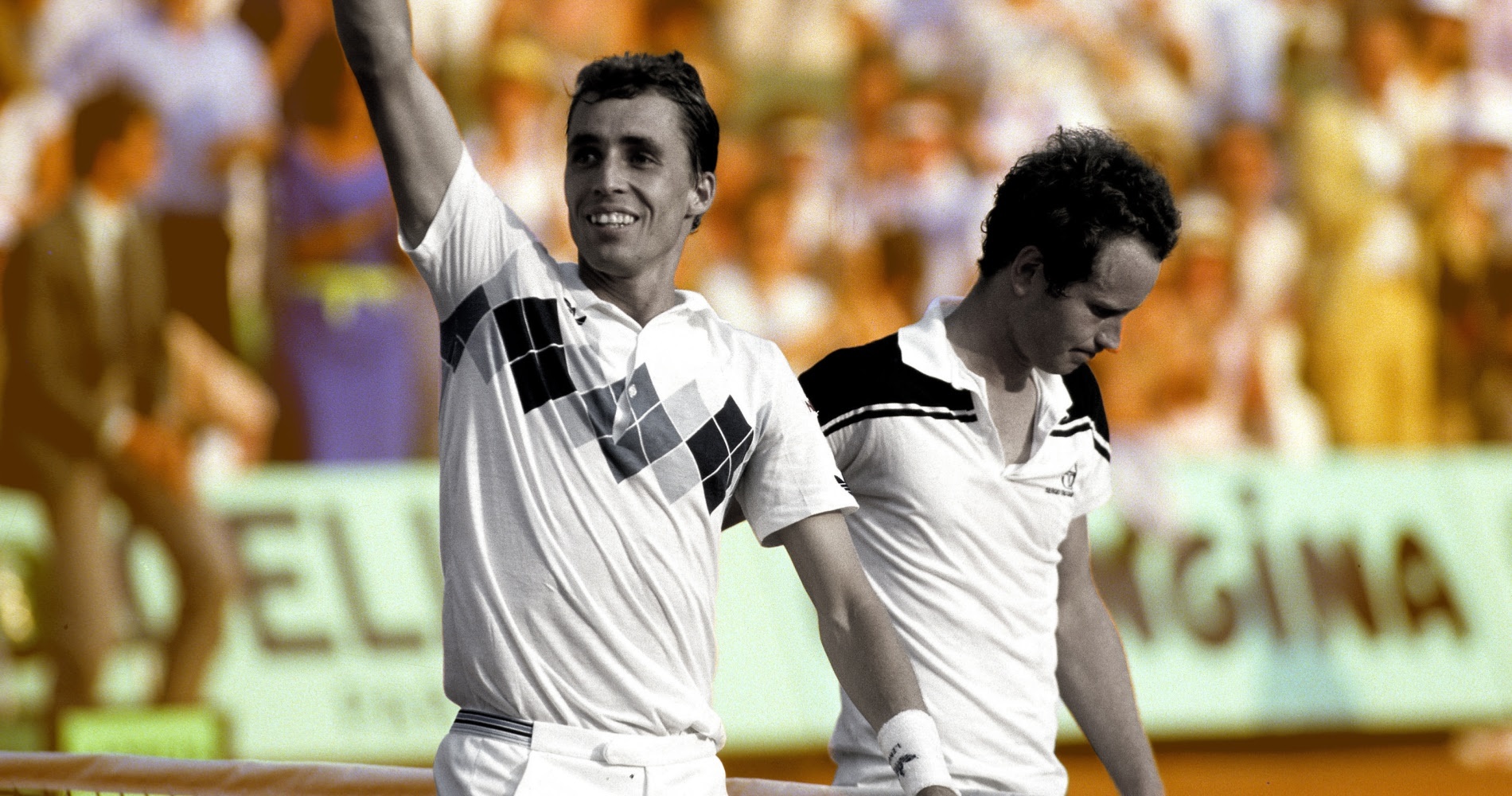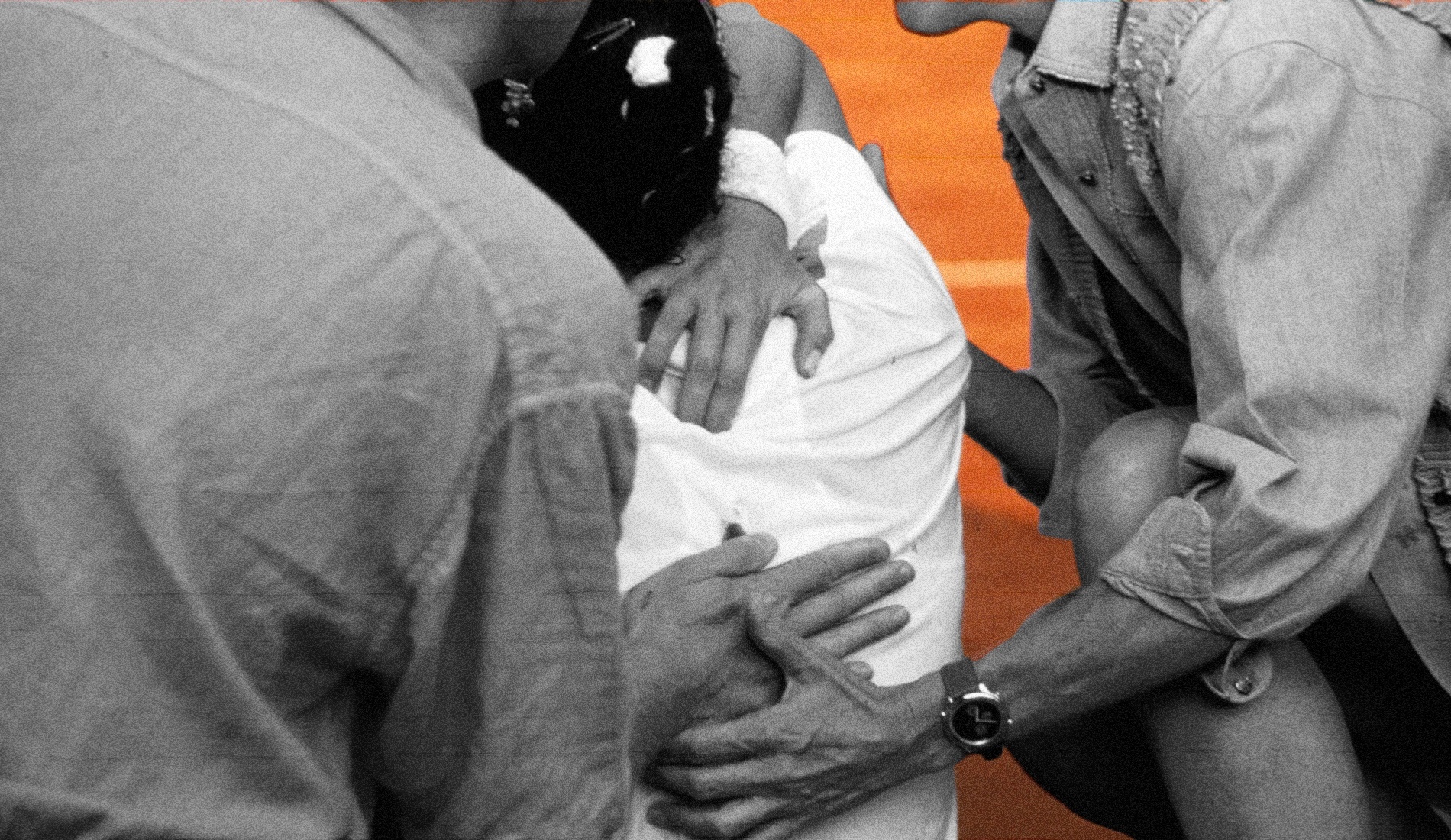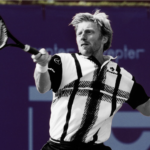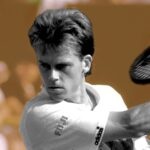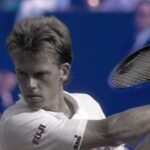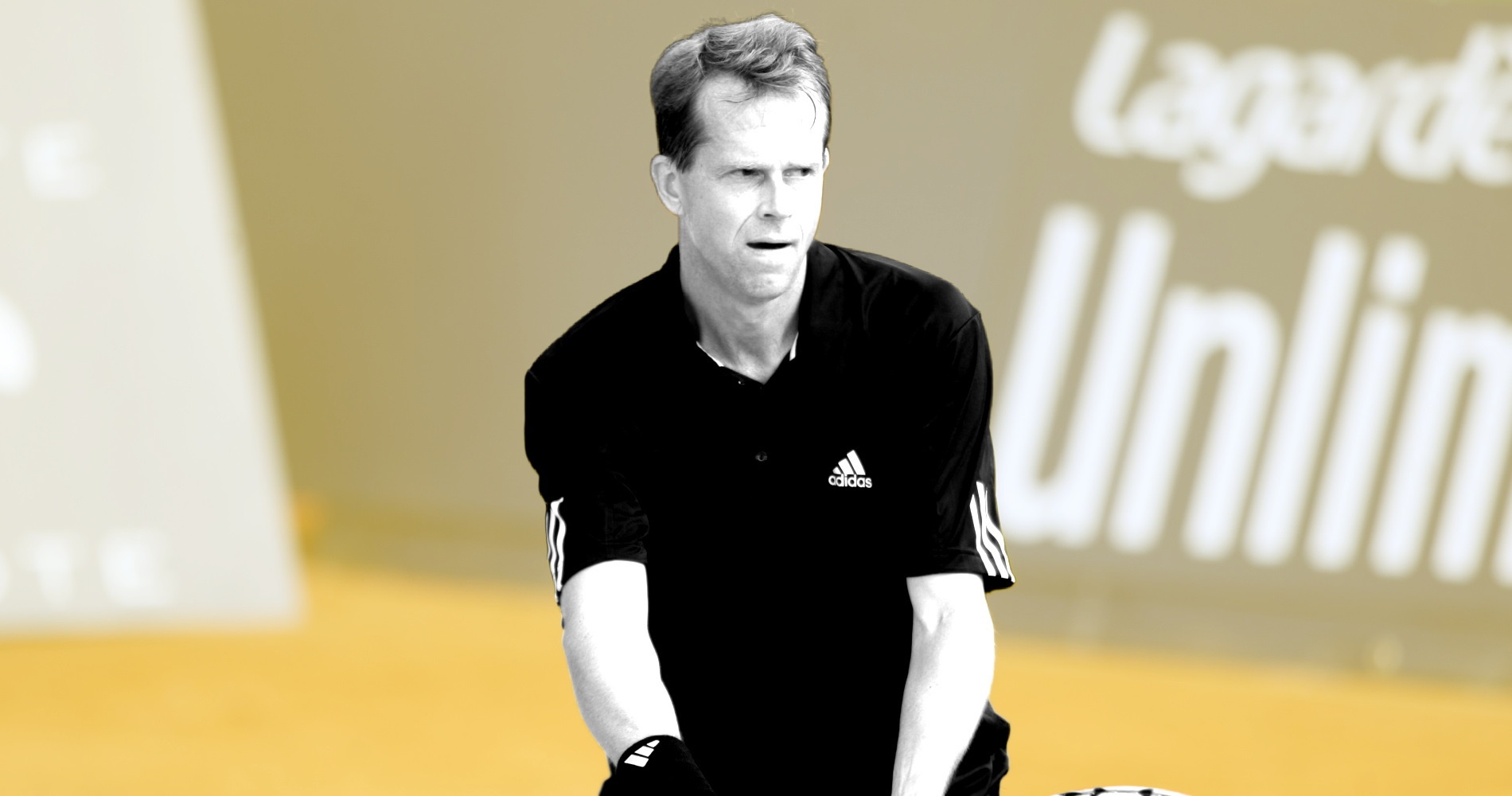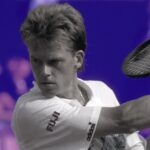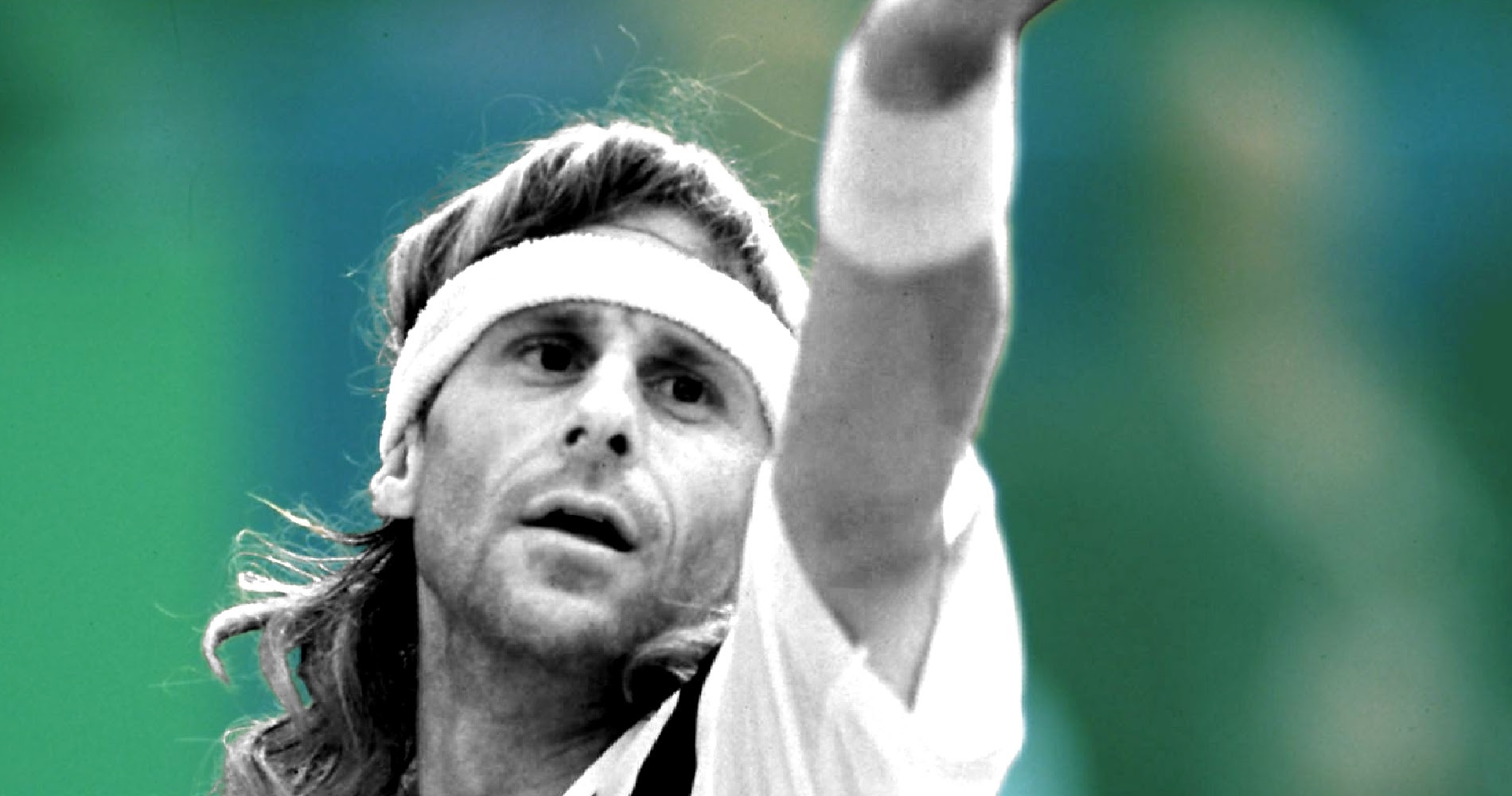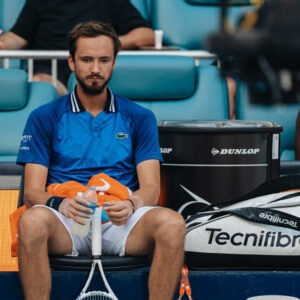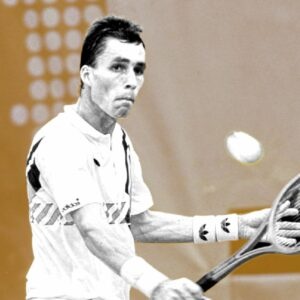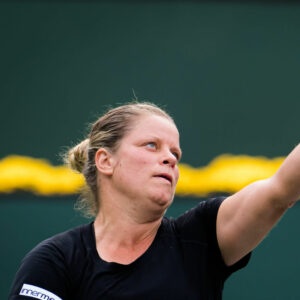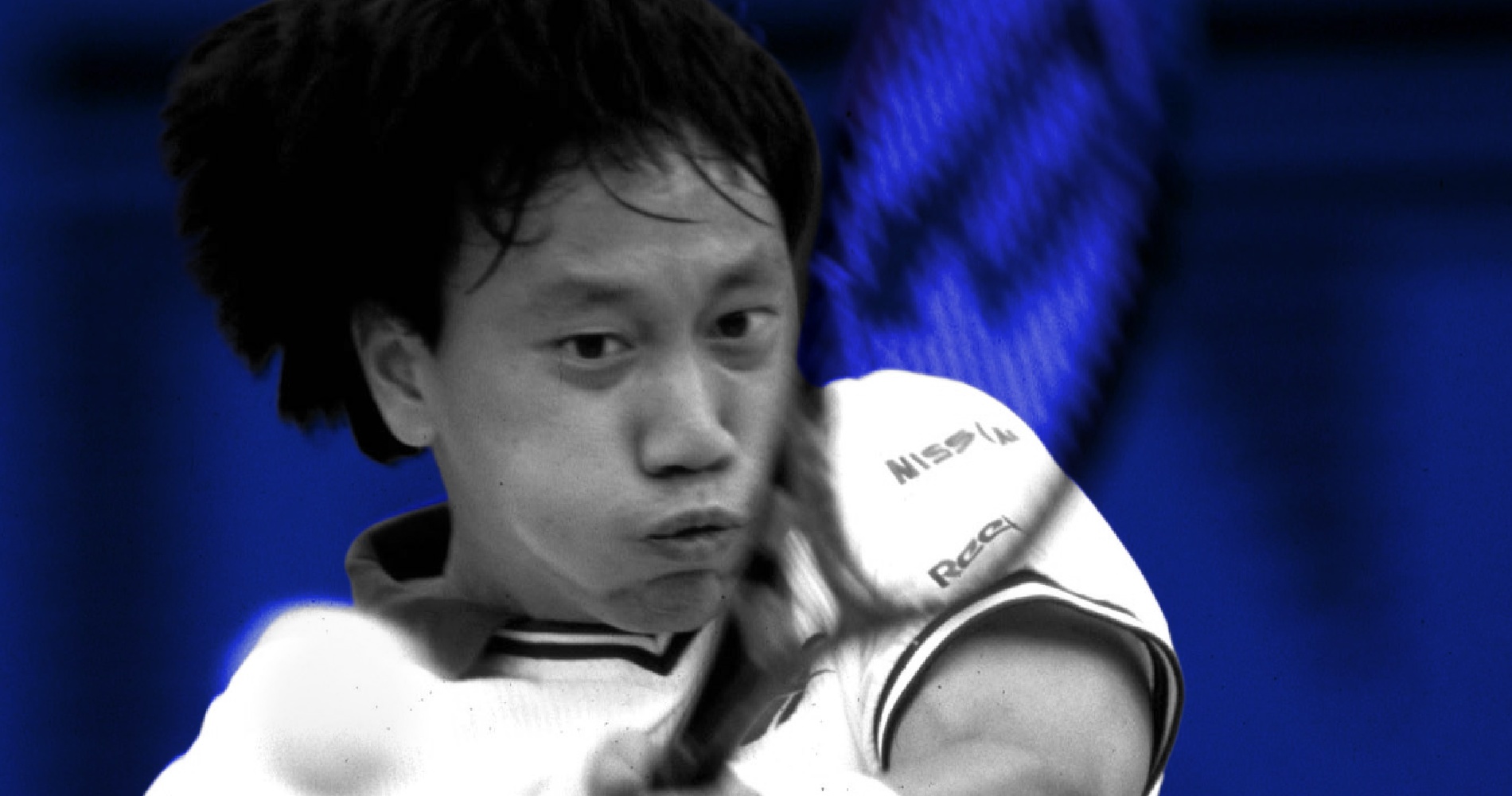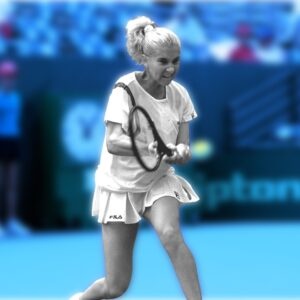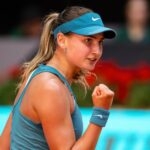The Final Hurdle… 9 tennis legends struggling to overcome a particular surface
Daniil Medvedev’s struggles with clay-courts and Rafael Nadal’s poor record indoors are well-documented. But the two are not the first elite player to struggle on a particular surface. Tennis Majors looks back at some of the greats in tennis and their struggles on one particular surface

One of the major storylines earlier this year during the clay-court season had been Daniil Medvedev’s inability to string together wins on the European red dirt. The Russian has a rather unflattering record on the surface over the years and after early losses in Madrid and Rome, Medvedev came into Paris with a 11-20 lifetime record on clay. That equates to a 35.4 winning percentage on the surface – much lower than his 71 per cent winning record on hardcourt and 60 per cent win ratio on grass.
Medvedev’s clay court performance, or rather the lack of it, came under even more scrutiny since the Russian had a very real chance of becoming the first player outside the Big 4 to reach the No 1 spot since Andy Roddick in 2003. But to get to that top spot, Medvedev needed to string together some wins on clay but the Russian was unable to do so.
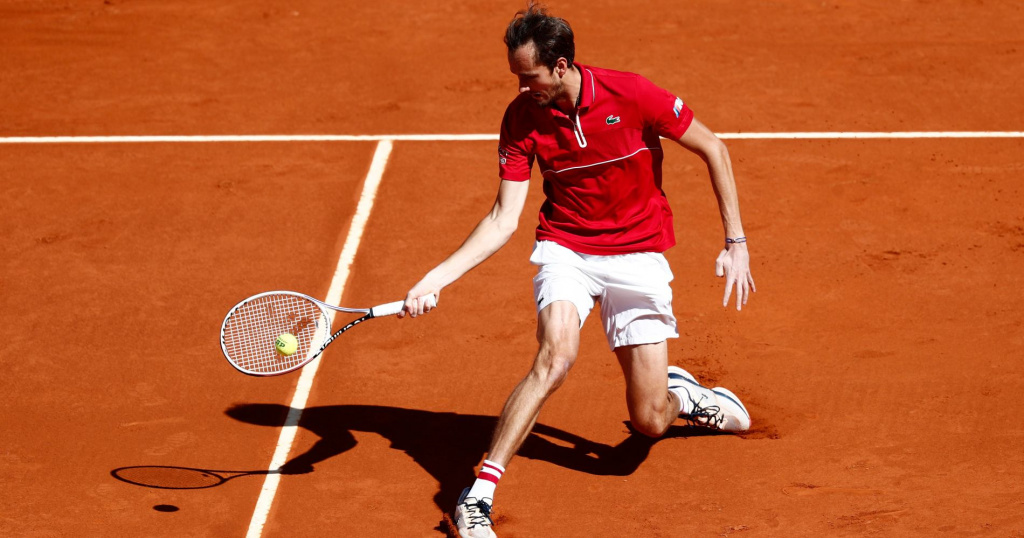
Medvedev is not the first top player to struggle on a particular surface. The history of tennis has seen several great players in the past fall short repeatedly on a particular surface. Here is a look at some of the greats who have conquered titles on multiple surfaces but have struggled to overcome that final hurdle.
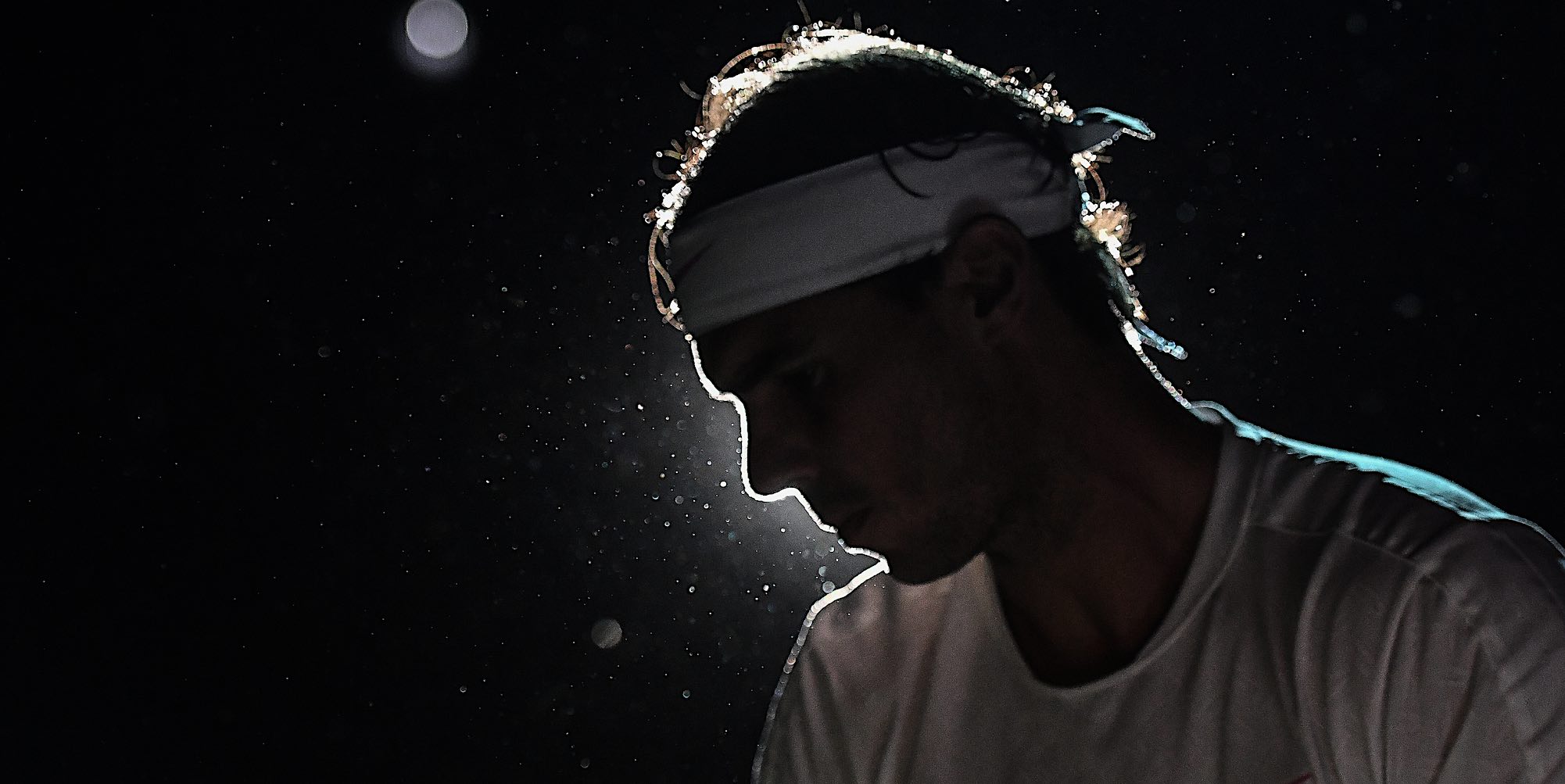
Rafael Nadal, King of Clay but struggling Indoors
Nadal’s worst surface: Indoor hardcourts
How we know : Among his incredible 88 trophies, Rafael Nadal has won only one ATP tournament on indoor hard courts (Madrid Open in 2005) and among the few gaps in his resume is the lack of an ATP Finals title – the most prestigious tournament on the men’s calendar after the four Grand Slams.
Nadal’s history with indoor hardcourts : When Nadal first came on the tour in 2003, not many expected him to get this good on hard courts and grass. Nadal’s trophy cabinet may be dominated by clay-court titles with 62 of his 88 titles having come on that surface but the Spaniard has certainly become a force to reckon with at every hardcourt or grass court event he enters for a long time now. However, Nadal has struggled to achieve similar heights when it comes to playing indoor hardcourts.
At the ATP Finals, the year-end event featuring the top eight players of the season, 2021 marked the first year Nadal did not finish in the top 8 since 2004 as injuries forced him to skip Wimbledon, the US Open and the entire fall swing in 2021. Nadal has finished runner-up on two occasions, in 2010 losing to Roger Federer in three sets, and in 2013 to Novak Djokovic in straight sets. Nadal has also yet to win the Paris Masters title in Bercy – having reached the final once in 2007 and the semi-finals on four other occasions.
Why indoors? One of the reasons cited by many for Nadal’s struggle indoors is that his topspin shots and his physical prowess – two of his biggest strengths are not as big factors indoors as they are on outdoor clay or hard courts. Nadal fans are quick to defend their hero saying that the indoor season usually comes in the latter part of the season when the Spaniard is usually exhausted after a long run. That is a fair point but the lack of an ATP Finals title remains an important goal for the Spaniard – being one of the few important events he has yet to win in his glittering career.
Does it matter? Not really. Even if Nadal never wins the ATP Finals or any indoor tournament going forward, you can be rest assured that the Spaniard sleeps well at night. While his goal to improve indoors will certainly motivate Nadal as long as he plays on the tour, it is unlikely to turn into an obsession – much like Ivan Lendl’s quest for Wimbledon became in the 1980s. Nadal’s 13 Roland-Garros titles and 20 overall Grand Slam titles have forever assured him a special place in tennis history.
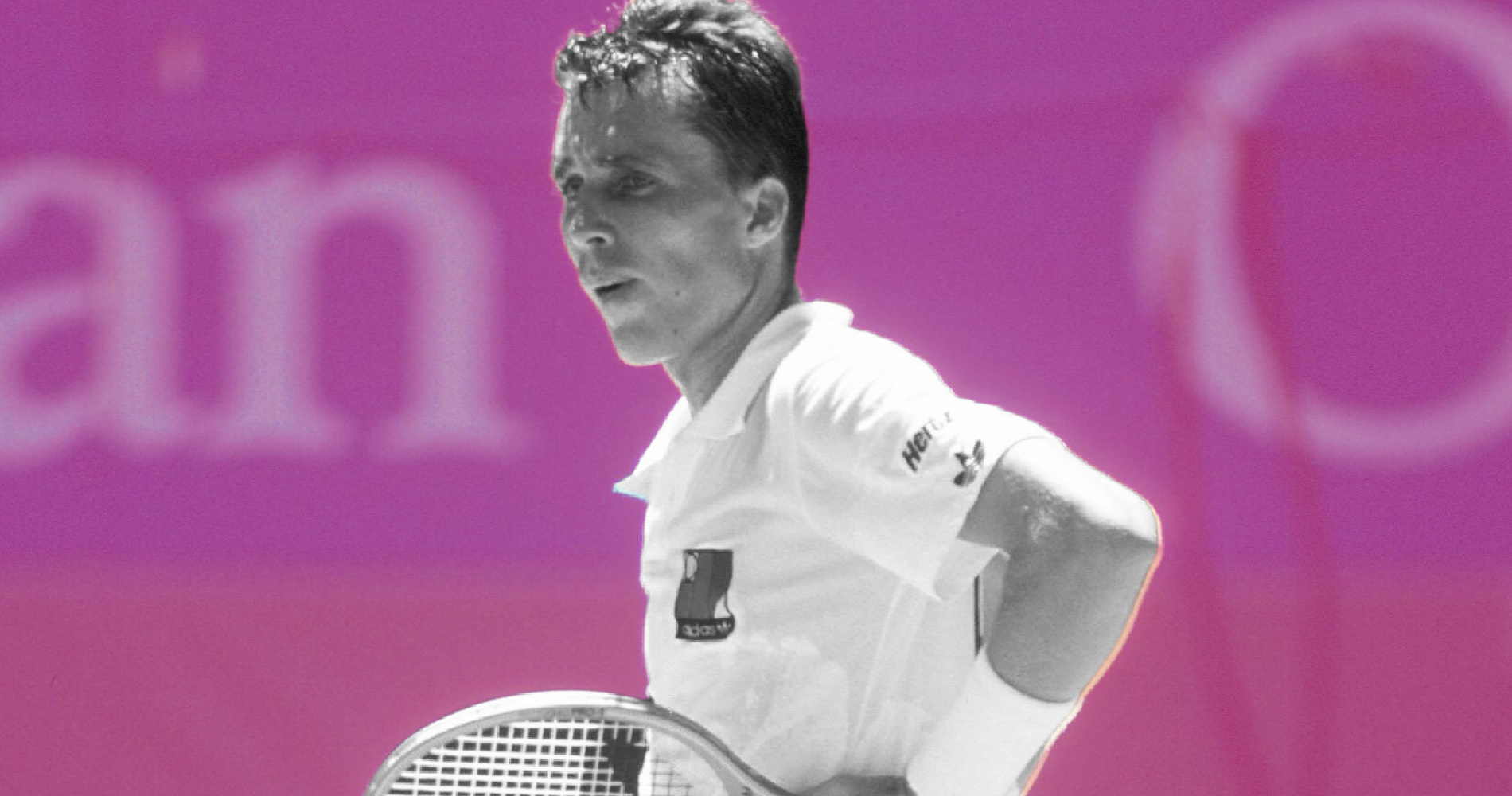
Ivan Lendl, The Wimbledon dream left unfulfilled
Lendl’s worst surface: Grass
How we know: Lendl, who has been credited with being among the first top player to introduce professional training methods in the sport, won eight Grand Slams and five year-end Championship titles during his remarkable career. But the Czech-born American’s dream of winning Wimbledon title sadly remained unfulfilled.
Lendl’s history with grass: Lendl famously skipped Wimbledon in 1982 requoting the famous “grass is made for cows” statement. A few years later, Lendl was so doggedly determined to win the tournament that he hired Aussie legend Tony Roche and switched to a more aggressive serve-and-volley style in his quest to win at the All England Club. Lendl also skipped Roland-Garros twice in 1990 and 1991 to prepare for Wimbledon but his dream sadly remained unfulfilled as he fell twice at the last hurdle – to Boris Becker in the 1986 Wimbledon final and in the 1987 Wimbledon final to Pat Cash – both times in straight sets. Lendl also reached the semi-finals at SW19 on five occasions during an eight-year span, but the Wimbledon trophy always eluded him.
Does it matter? Lendl’s quest for Wimbledon remains one of the sport’s greatest unresolved quests. While coaching Andy Murray to a Wimbledon title may have eased some of that pain, many wonder if Lendl would have won Wimbledon had he stuck to his baseline strengths rather than trying the serve-and-volley approach. Like many other hypothetical debates in tennis, that’s an answer we would never know.
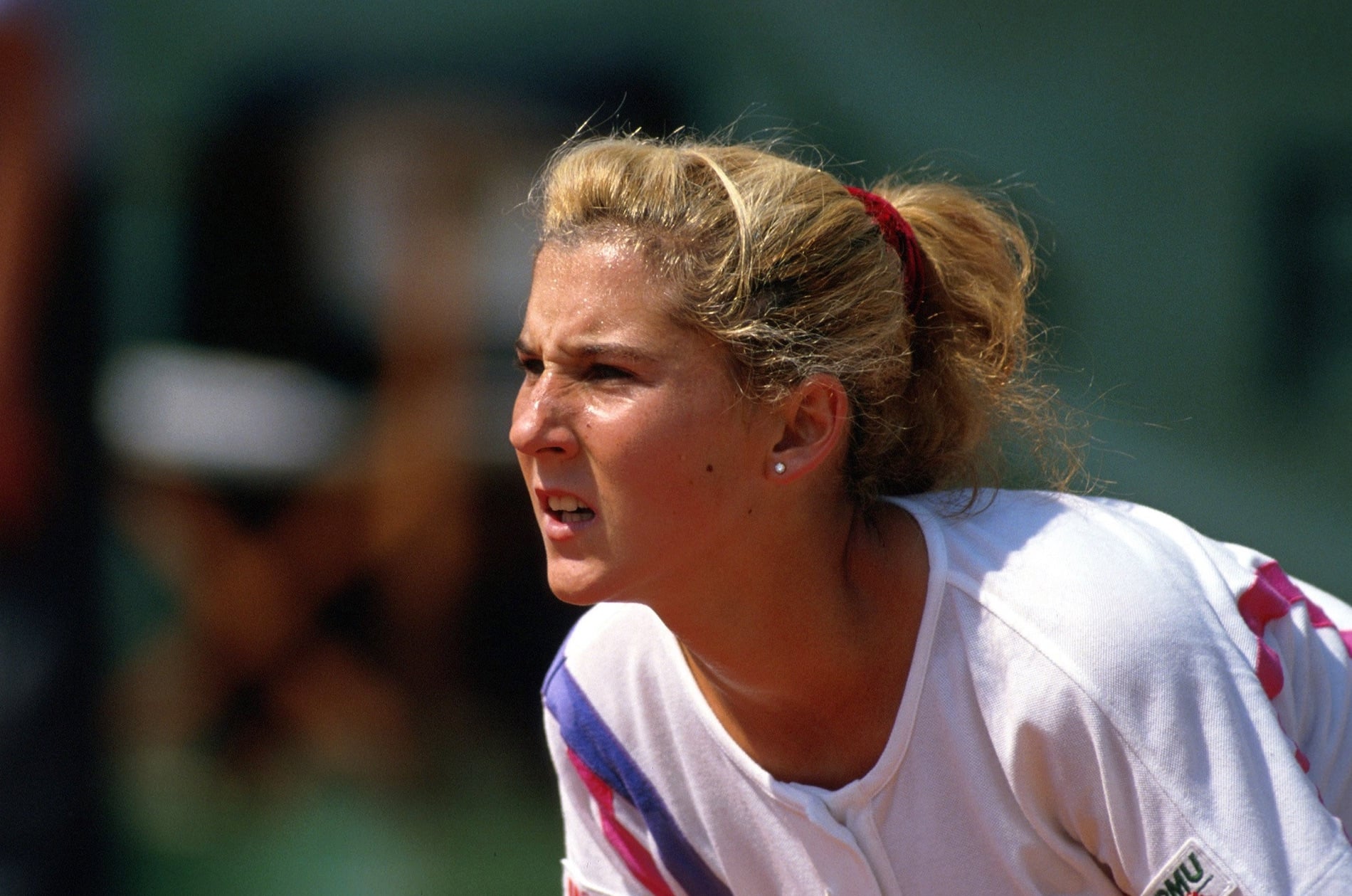
Monica Seles, a Wimbledon dream muted by grunting complaints
Seles’ worst surface: Grass
How we know: Is there any other hypothetical debate that is more straight forward than the one on Monica Seles winning more Grand Slams had her career not been ripped apart by the unfortunate stabbing attack by a deranged fan of her rival Steffi Graf in 1993 ? While women’s tennis has usually seen players dominate on all surfaces, Seles, a nine-time Major winner, left the sport with a Wimbledon-sized hole in their resume.
Seles’ history with grass: Seles’s double-fisted groundstrokes was far from ideal for the low-bouncing grass at SW 19, but she was still good enough in her prime to beat the nine-time Wimbledon champion Martina Navratilova and reach the final in 1992. Distracted by complaints about her grunts in earlier rounds, a muted Seles went down to Steffi Graf in that final. Nine months later, her tragic stabbing took her away from the sport for more than two years. While she returned to win the Australian Open in 1996 and become a regular fixture the top 10 for many years, Seles never returned to her dominating pre-stabbing form and never reached another semi-final at the All-England Club.
Does it matter?: Before her unfortunate break, Seles looked set to rewrite the history of women’s tennis. The left-hander had won 8 Grand Slams before she was even 20. Her career and the history of women’s tennis was forever changed on that ill-fated day in April 1993. In her six appearances at the All England Club post her return to the tennis circuit in 1995, Seles made the quarter-finals on three occasions but was unable to come closer than that to laying her hands on the Venus Rosewater Dish trophy.
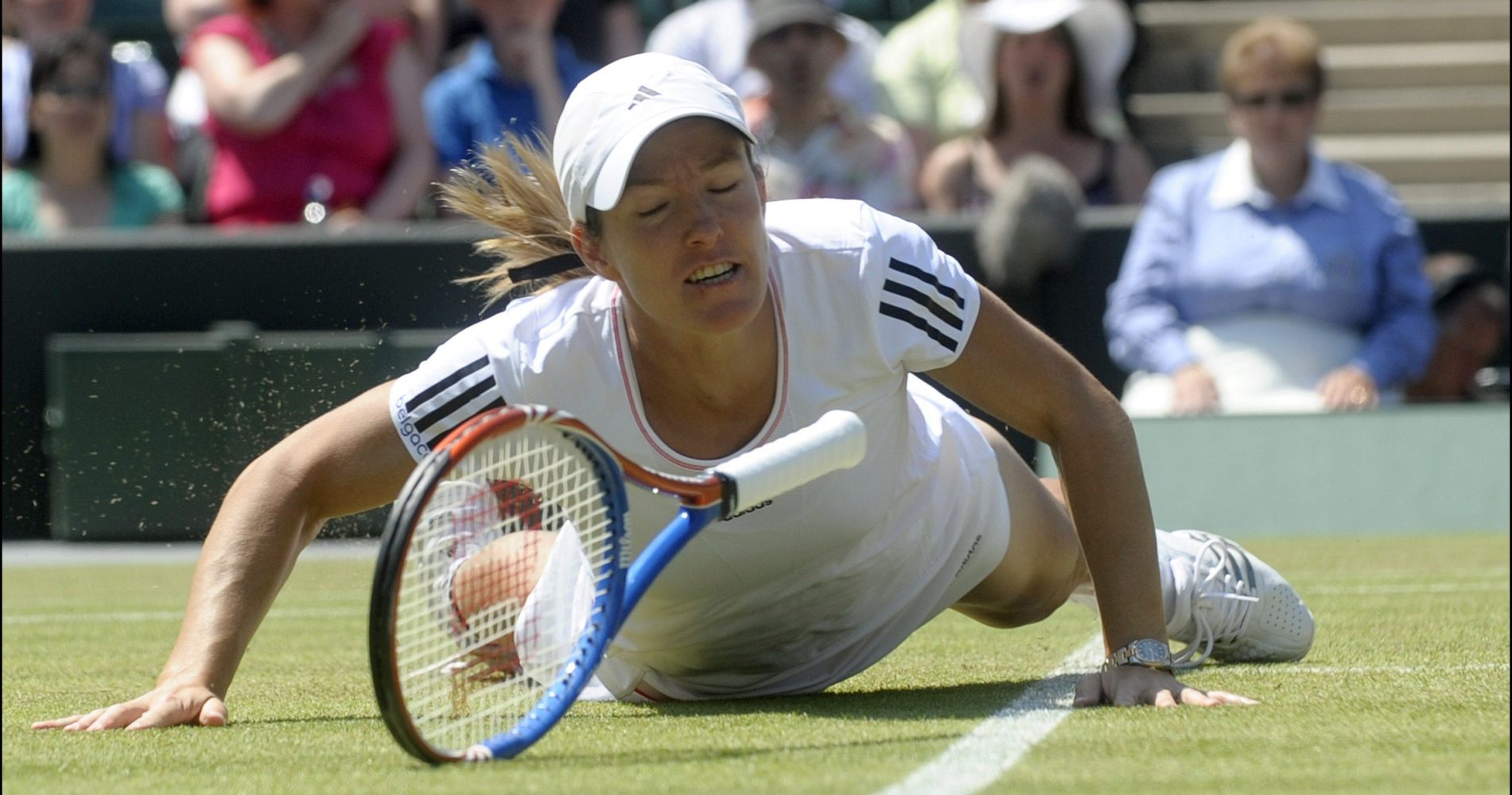
Justine Henin, Wimbledon pulls her into a comeback and ends it as well
Henin’s worst surface:: Grass
How we know: Justine Henin was another top women’s player who was unable to capture the Wimbledon singles title. The seven-time Grand Slam winner had a game naturally suited to grass – a big serve, powerful groundstrokes, a backhand slice, good volleying skills and great court movement. But despite two runner-up finishes and three semi-final appearances, the Belgian was unable to hold the Venus Rosewater dish aloft. So much so that watching Roger Federer complete his career Grand Slam at Roland-Garros in 2009, proved to be the trigger point for Henin to make a comeback to the tour in 2010 after she had first hung up her racquet in 2008.
Henin’s history with grass: Henin reached the final of her first Slam back at Australia – but Wimbledon proved to a disappointment once again. The Belgian suffered an elbow injury during her third round win at SW 19. After losing to compatriot Kim Clijsters in the next round, Henin ended her 2010 season prematurely. Although she returned to compete in Australia in 2011, the elbow injury she sustained in London caused her to announce her second and final retirement in early 2011.
Does it matter?: Leaving aside Serena Williams, Henin has been one of the all-time greats of the 2000s. The lack of a Wimbledon title’s biggest impact – she is missing from the group of 10 women who have completed the career Grand Slam in women’s tennis.
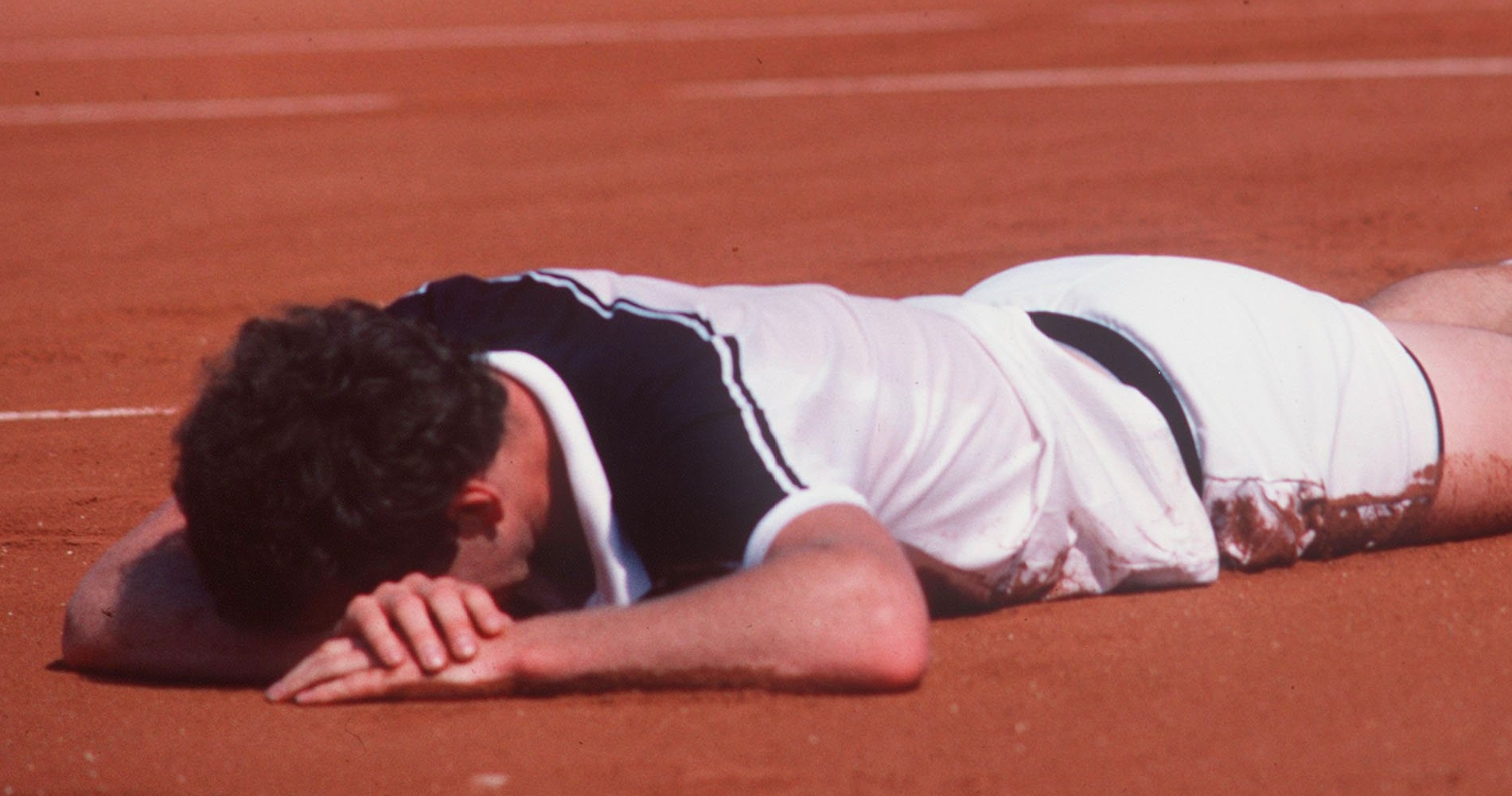
John McEnroe, one set away from the French Open title forever
McEnroe’s worst surface:: Clay
How we know: Besides Wimbledon, Roland-Garros has been the other Grand Slam where many top players in the Open Era have struggled to overcome the final hurdle. John McEnroe, tennis’ original enfant terrible, is among those who never won the French Open. The American reached the final once in 1984 – the season he compiled an astonishing 82-3 record. The American was one set away from winning Roland-Garros that year as he went up two-sets-to-love against Lendl in the final, before the Czech came back to win a five-set classic 3-6, 2-6, 6-4, 7-5, 7-5.
McEnroe’s history with clay: Having failed to lift the French Open trophy that year, McEnroe reached the semis in Paris only once again (in 1985). He took a break from the tour in 1986 and never returned to his former dominant self. McEnroe has since admitted that the 1984 loss in Paris remains one of his most bitter defeats and rankles him even years later.
Does it matter? McEnroe’s serve-and-volley was never particularly suited to the clay courts in Europe. With seven singles majors and nine Grand Slam doubles titles, McEnroe’s place in tennis history is guaranteed as one of the all-time greats.
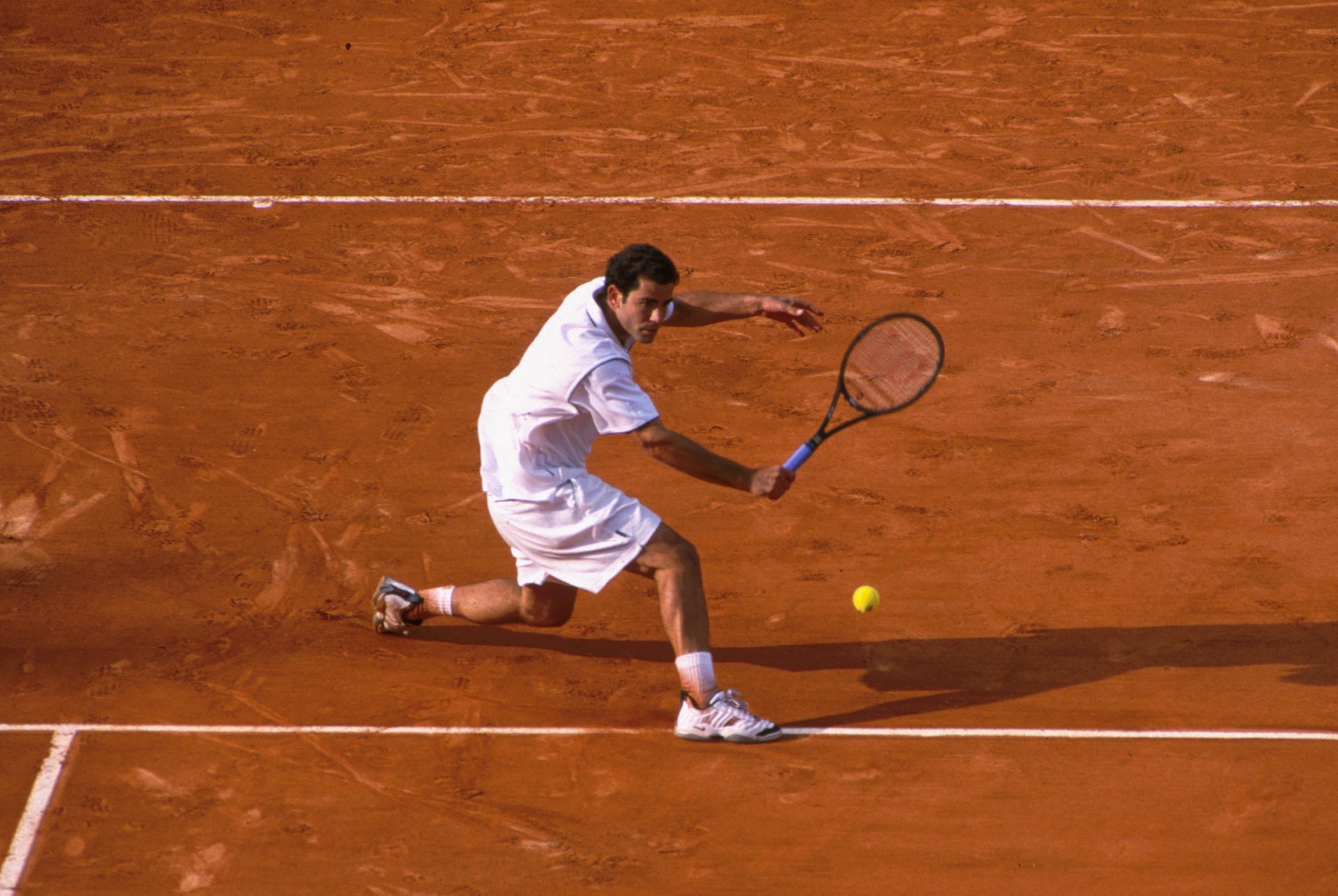
Pete Sampras, the serve-and-volleyer who could not triumph on Parisian clay
Sampras’s worst surface:: Clay
How we know: While Andre Agassi (1999), Roger Federer (2009), and Novak Djokvoic (2016) have all been able to complete their career Grand Slam titles with victories at Roland-Garros, three of the game’s biggest legends in the Open Era all come up one Roland-Garros title short of completing the career Grand Slam.
Sampras’ history with clay: Pete Sampras, whose 14 Grand Slam titles was long the benchmark in men’s tennis before being broken by Federer in 2009 and then repeatedly by the Big 3, is part of this group. The American’s powerful serve-and-volley game and aggressive style of play, was slowed down by the European clay and he never reached the final in Paris. His best performance came in 1996 when he reached the semis, beaten by Yevgeny Kafelnikov 7-6, 6-0, 6-2.
Sampras, who had reached three successive quarter-finals from 1992 to 1994 prior to his semi-final finish (going down to Andre Agassi, Sergi Bruguera and Jim Courier in those years), reached the third round only once in six appearances after his loss to Kafelnikov.
Does it matter? A Roland-Garros title would have made Sampras one of nine men to have won the career Grand Slam. But given his other record-breaking achievements of 14 Grand Slam titles, the record until broken by Roger Federer, and six year-end No. 1 finishes, beaten by Djokovic in 2021, the American’s place in tennis history is firmly entrenched.

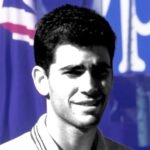
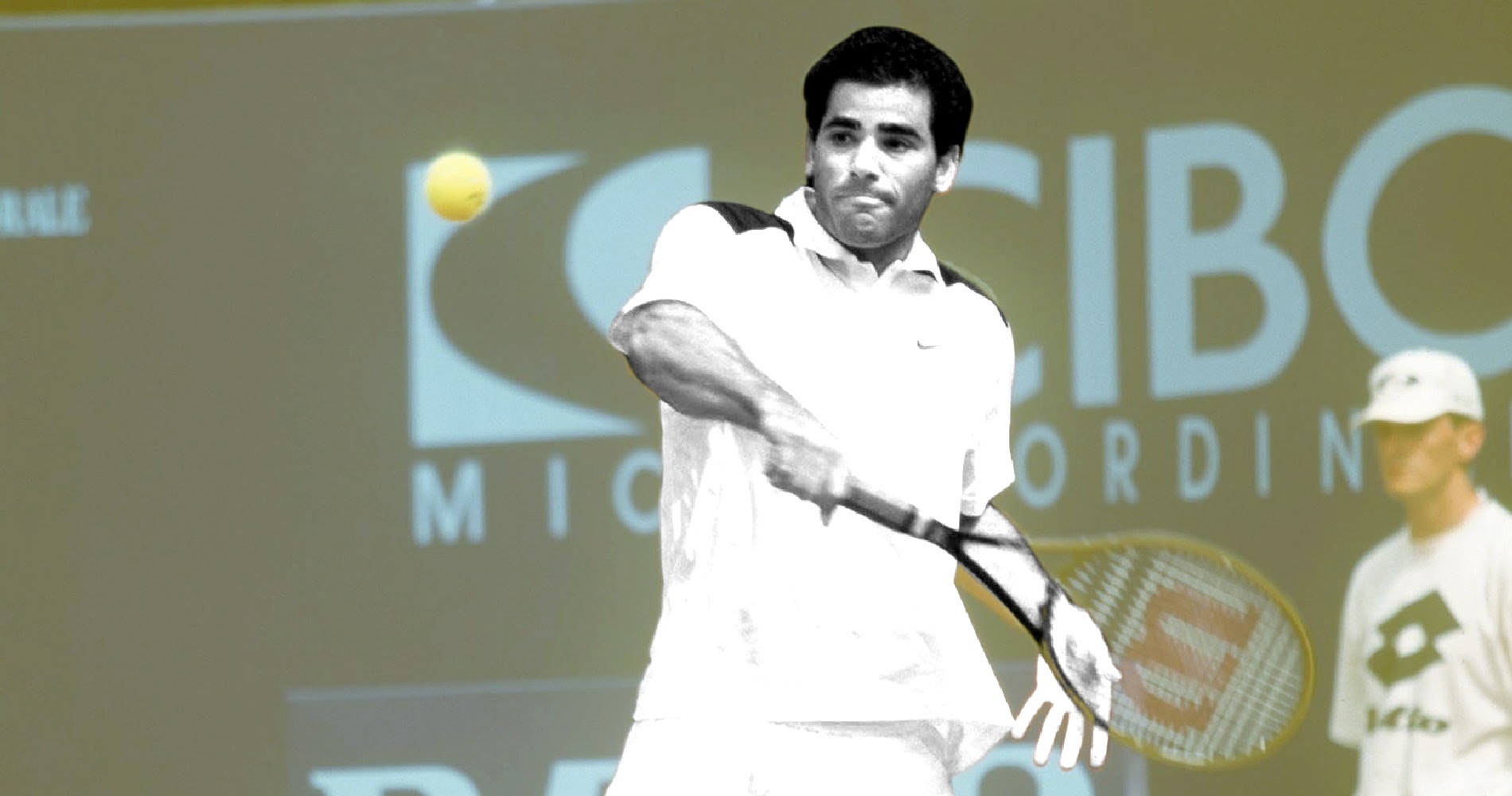
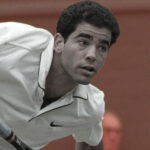
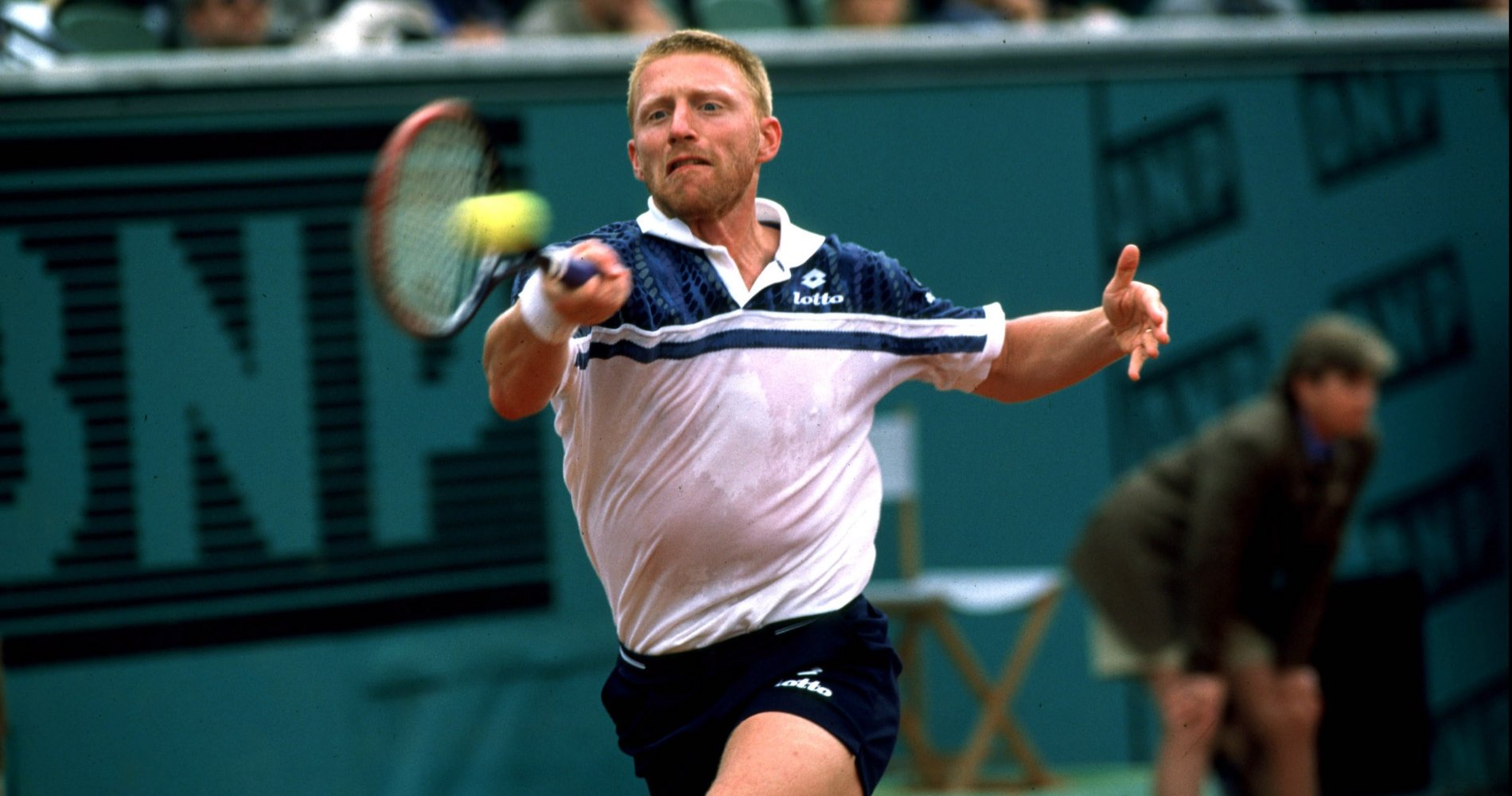
Boris Becker, Boom Boom goes bust on clay
Becker’s worst surface: Clay
How we know: Like Sampras, Becker, one of the best serve-and-volleyers of all-time, also failed to win in Paris and complete his career Grand Slam set.
Becker’s history with clay: Becker reached and lost in the semi-finals in the French Open three times – 1987 (beaten by Mats Wilander 6-4, 6-1, 6-2), 1989 (defeated by Stefan Edberg 6-3, 6-5, 5-7, 3-6, 6-2) and 1991 (lost to Andre Agassi 7-5, 6-3, 3-6, 6-1) .
Does it matter? More surprising than Becker’s drought at the French Open was the fact that the German did not win a singles title on clay court in his entire career, despite reaching six finals (including five at the ATP Masters Series) level. But Becker’s six Grand Slam titles are enough to garner him a place among the all-time greats.
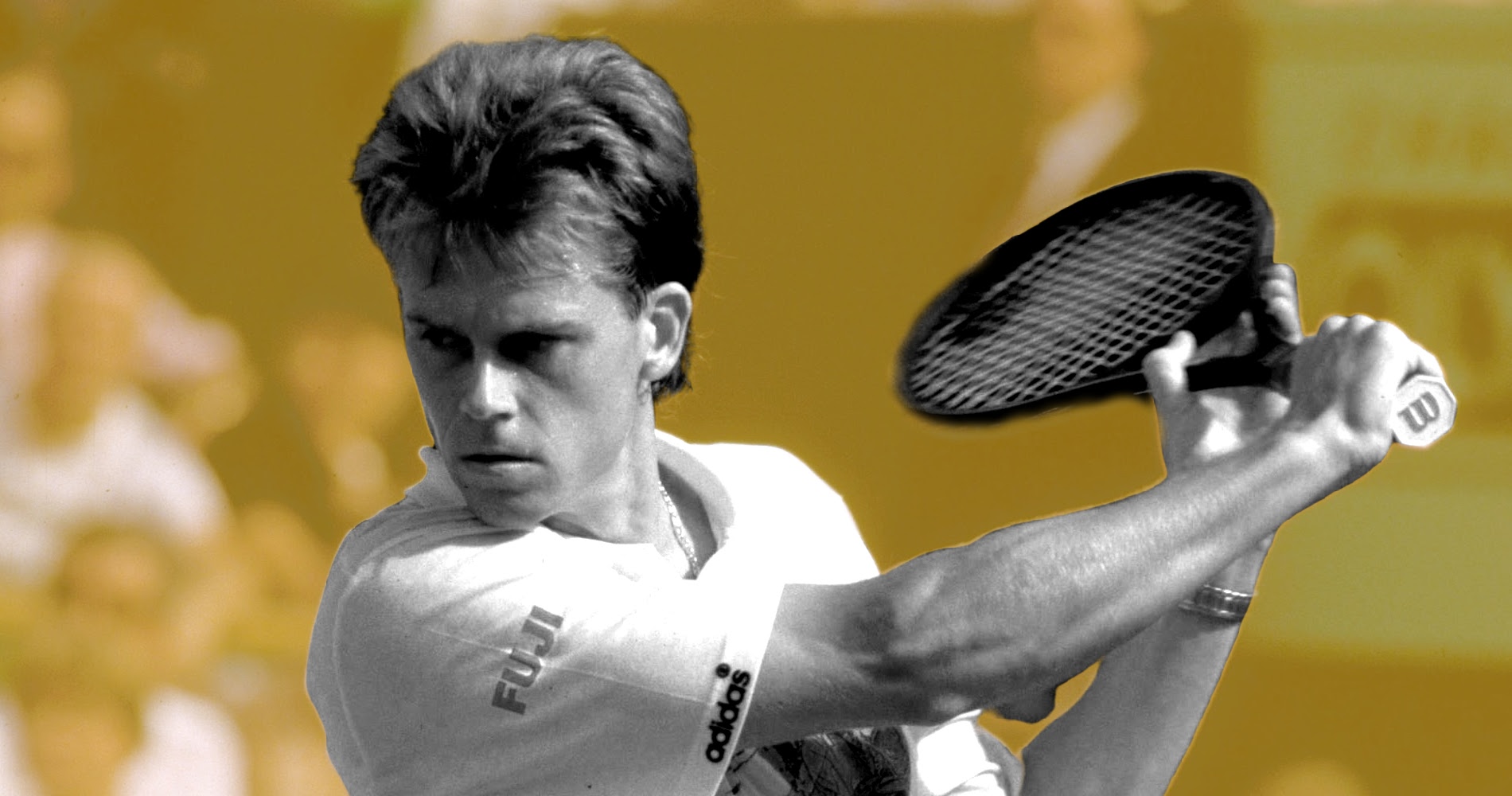
Stefan Edberg, The Sweden who played a style different
Edberg’s worst surface: Clay
How we know: Like Sampras and Becker, Edberg, another of the all-time great serve-and-volleyers, also came up one French Open short of completing his Grand Slam set.
Edberg’s history with clay: Edberg’s best performance at Roland-Garros came in 1989, when he reached the final. Despite being the overwhelming favourite against Michael Chang, the Swede was defeated by the American teen in five sets 6-1, 3-6, 4-6, 6-4, 6-2. The Swede, whose serve-and-volley style was a big contrast to the baseline style used by countrymen Bjorn Borg and Mats Wilander, who both won the French Open title.
Edberg also reached three other quarter-finals in Paris, the last of which came in 1993.
Does it matter? It matters only to the extent of Edberg not completing the career Grand Slam set. The Swede won the Australian Open, Wimbledon and the US Open twice each to secure his place in the International Tennis Hall of Fame.
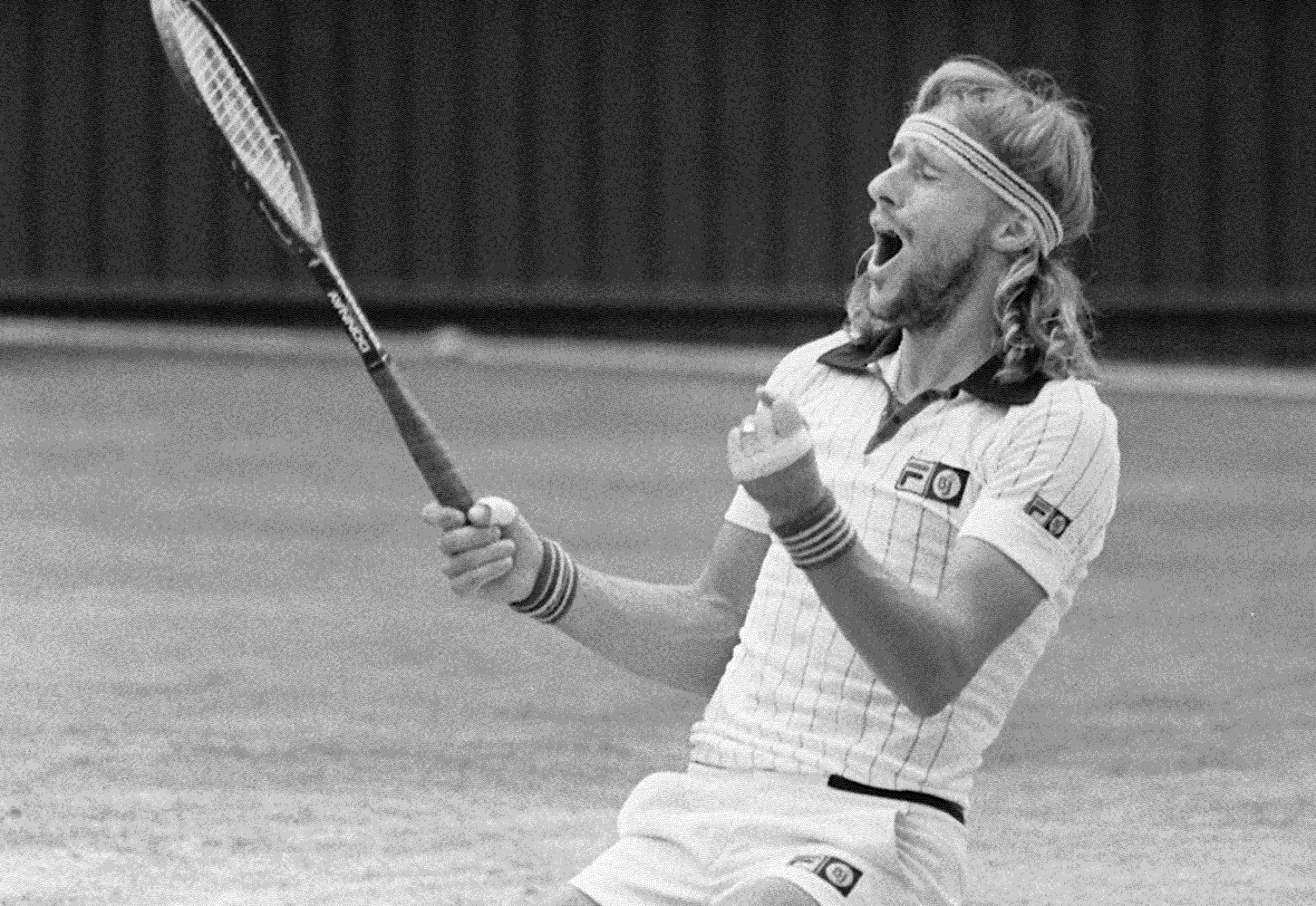
Björn Borg, the man who dominated clay and grass but failed to win a hardcourt Major
Borg’s worst surface: Hardcourt
How we know: In the earlier years, due to the marked differences in speed of the courts, tennis, especially on the men’s side, was full of grass-court specialists and clay-court specialists. But there haven’t been many cases where a player has dominated clay courts and grass courts, but failed to win a hardcourt major.
Borg’s history with hardcourt: Bjorn Borg was tennis’ first rock star, winning six titles at Roland-Garros and five at Wimbledon between 1974 and 1981. But the Ice Cool Swede failed to capture a hardcourt Grand Slam in his career. While he travelled to the Australian Open only once in his during his decade long career (1974), when the tournament was still played on grass,, Borg did reach the US Open final four times (once on clay in 1976, and thrice on hardcourt in 1978, 1980, and 1981), coming up short on each occasion. That last 1981 final loss to rival John McEnroe, coming close on the heels of his Wimbledon final loss a few months earlier, led the Swede to take a premature break from the circuit. Although, Borg played sporadically in the next few years and tried to the return to the tour in the early 1990s, he never returned to his winning ways – either on hardcourts or any other surface.
Does it matter? While several clay-court specialists have failed to win Wimbledon and several faster-court players have failed to win the French Open, Borg is among the few who excelled on clay and grass but failed to win a hardcourt Major in his career.

